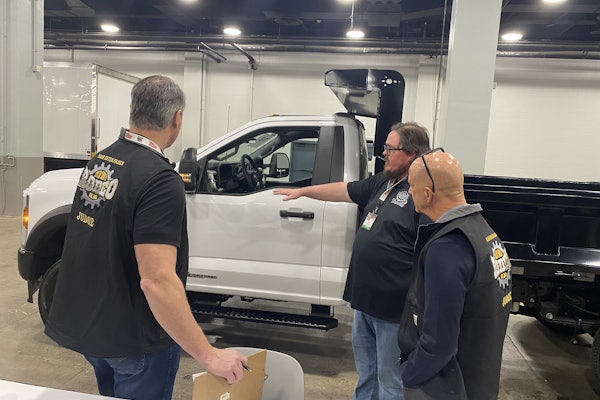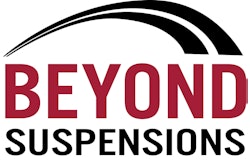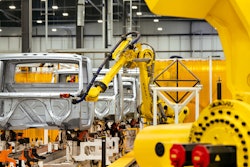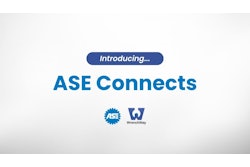MAINTENANCE DIRECTOR/ASSOCIATION
Southeastern Freight Lines and the Technology & Maintenance Council
Lee Long, director of maintenance, SEFL, and chairman of TMC’s Professional Technician Development Committee
TPS: What do you think was the most significant breakthrough in technician tools?
Long: I think the thing that has most revolutionized the industry is the computers that we have on the shop floors. When I was growing up, we used to have volumes and volumes of books that we had to sort through and the information was dated. Now you can use the computer to do a word search or use it for diagnostics to find out what the problems are. A lot of the computer programs now even have diagnostic trees within the diagnostic program itself. It makes pretty quick work out of something that used to take quite a while to research.
TPS: What do you see the future holding for technician tools and technologies?
Long: I think with the dependability of the equipment that we are seeing out there now and the miles that we’re generating, the equipment is becoming more and more efficient as far as fuel economy and emissions controls. As you see that continue to be tweaked and put out there as a more reliable product – with new technologies you always have hiccups in the road – the use of the onboard diagnostic systems that are being proposed will actually assist the technician even more in diagnosing and repairing the vehicle.
TPS: How has the shop environment changed over the past 25 years?
Long: Technology has really opened up the shop to a whole new level. A few years ago a technician would walk up to a truck and he probably would be able to tell you what’s wrong with it just be listening to it and touching and feeling it. Now it’s gotten a lot more sophisticated. When you had those older manual engines, you had to break out some books and do some studying, and get your gauges out and do some testing. But now, all that is contained in a lot of the diagnostic programs. You hook up the connector J1939 data bus and it will tell you this sensor is showing a low voltage or high voltage or hasn’t opened at all.
So you’re able to click a button on a lot of the programs and it will say, ‘ok, this is where you start the troubleshooting tree.’ Before you had to go through the manual and get your test equipment hooked up. Now it’s all right there for you and it’s giving you instant reads.
TPS: As the industry tries to attract new technicians,
how would advanced tools and technologies appeal to the next generation?
Long: I was in New York City earlier this week and I was riding the bus and the subway, and I was noticing the kids, every one of them, had an iPod or an iPhone that they had in their hands. That is going to be instrumental to tap for kids of the future to come into this workplace. They know that there’s diagnostic equipment out there to not only work in their favor, but also to continue their education on that resource they already have in their hands.
The key thing is that as an industry we need to make it very well known to them in the elementary schools and the secondary schools that there is a career in this industry for them. What we find in our research is that most schools have a computer lab and let a kid sit down and do a computer skill test. It’s easier because you can put a lot more kids in a confined area rather than working on a car or a truck in a shop environment. We need to get away from that mindset and get our kids focused on not only computers, but also the things that are hauling products up and down the highways and into our living rooms and into our kitchens everyday.
ASSOCIATION
National Institute for Automotive Service Excellence Tony Molla, vicepresident,Communications
TPS: What do you think was the most significant breakthrough in technician tools?
Molla: I would have to say the hand-held diagnostic scanners have had the largest impact on individual technician’s diagnostic capability and productivity in the past 15 years. With the growth in vehicle electronics, and the spread of those electronics into virtually every area of the vehicle, the ability to diagnose, test and troubleshoot various computer control systems with a single device was a great leap forward.
TPS: What do you see the future holding for technician tools and technologies?
Molla: I think we’ll be seeing more telematics incorporated into the vehicle fleets at all levels. For medium and heavy trucks, this would allow the ability to detect problems on the fly, as well as improve the logistics of fleet service by allowing pre-ordering of necessary parts and supplies and a more efficient maintenance scheduling process. Beyond that, I see computerized diagnostic equipment becoming even more capable, particularly as it relates to emission control.
TPS: How has the shop environment changed over the past 25 years?
Molla: It’s gotten much better for the technician. Advances in safety equipment, environmental laws and developments in specific tools to help ease the technicians’ workloads, like specialized lifting equipment, have greatly reduced the number of OTJ [on-the-job] injuries and the exposure to dangerous materials. Upgrades in computer equipment have aided in improving productivity and accuracy in the areas of scheduling, work management, technical information access and distance learning to improve training access at the shop level. Many shops have even upgraded their physical plant by adding such things as air conditioning and modernizing operations to improve the overall work environment for their employees.
TPS: As the industry tries to attract new technicians, how would advanced tools and technologies appeal tothe next generation?
Molla: The next generation was raised with computers and cell phones. They are a digital society and respond well to an increasingly electronic environment. They are very comfortable working with computers and computerized test equipment and are generally better educated, with technical training resources at the high school and post-secondary level that didn’t exist 20 years ago. In general, students coming out of today’s technical training programs are better prepared for coping with the high-tech nature of virtually every type of vehicle being produced today.
As I mentioned, labor-saving devices are easing the workload, while more modern shops and equipment are dispelling many of the negative stereotypes traditionally associated with a career in vehicle service. Working the vehicle service sector today is as much a high-tech career as any other. This, combined with an improvement in work flexibility and benefits, are key to helping us attract the best and the brightest to deal with increasingly complex vehicle technology as we move into the 21st Century.
DISTRIBUTOR/SERVICE PROVIDER
Inland Truck Parts Company Dave Scheer, president
TPS: What do you think was the most significant breakthrough in technician tools?
Scheer: The development and use of portable electronic tools has been a tremendous breakthrough for technicians. Technician tools have evolved and continue to evolve. They are getting smaller, easier to use and are multi-purpose. All of these have been significant advancements in the use and effectiveness of technician electronic tools.
At the same time we also have created tool effectiveness barriers by restricting access to product and technical information the tech needs to do a quality and efficient repair. The technology exists to read fault codes, set parameters or troubleshoot a problem with a single hand-held tool. However, using perceived competitive advantage as justification, we have limited access to the necessary information technicians need. We are creating frustration and job dissatisfaction for them as well as creating barriers for recruiting and developing future technicians.
TPS: What do you see the future holding for technician tools and technologies?
Scheer: They will continue to evolve and become more comprehensive and easier to use. They will be able to wirelessly access systems and networks so they can be used seamlessly and effectively. The marketplace will demand it.
TPS: How has the shop environment changed over the last 25 years?
Scheer: Truck shops and the workplace environment have changed dramatically over the last 25 years to meet the expectations of the technician and the customer. As always, the marketplace has been the impetus for change. The customer has little tolerance for, and in most cases, will not accept anything less than a high quality, professional experience. They expect to be greeted by clean, well groomed and courteous service writers or service managers. They expect our facilities to be clean, neat and well equipped. If you don’t “look the part,” more and more customers won’t consider you a viable choice as their service provider.
Technicians also have high expectations of their employer and their work environment. They want to work for a quality organization that is well managed and that will invest in the necessary tools and equipment they need to do their job correctly and efficiently. They are concerned about workplace safety and their longevity; consequently they want the latest lifts, stands, jacks, etc. to limit the physical demands of their job. They are proud to be an accomplished technician and want to be recognized for their talent and expertise.
TPS: As the industry tries to attract new technicians,how would advanced tools and technologies appeal to the next generation?
Scheer: The technician of today, and even more so in the future, will have to know as much about computer systems and networks as he or she knows about shafts, gears, injectors, etc. Today’s young people are not afraid of technology – they embrace it. They will demand the latest equipment, technology and software to choose this industry as their career. We (our industry) must also have in place excellent training resources if we expect the students of today to choose truck technician as a potential career. They won’t tolerate the limitations and frustrations I described above in the name of completive advantage.







